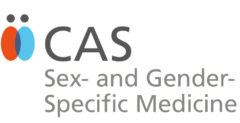Date: 5 – 6 March 2026
Place: Bern
Language: English
Registration single module: Registration
Fee: two-day module CHF 500
Credits:
1 ECTS point two-day module
CME points applied for “Schweizerische Gesellschaft für Infektiologie”
CME points applied for “Schweizerische Gesellschaft für Pneumologie”
Objectives of the module
Participants
- can explain the influence of sex and gender on the risk of sexually transmitted infections (STI) and HIV and know the core group theory, sexual behaviour and networks, and the most important factors for STI and HIV epidemics.
- are aware of gender differences in the diagnosis and treatment of urological tumours, urinary tract infections and bladder dysfunction and understand the role of anatomy and hormones.
Content of the module
The module combines the fields of infectiology and urology. Different risk behaviour, the influence of gender roles, differences in anatomy and sex-specific characteristics of the immune system lead to important differences in the epidemiology, expression, course and treatment of diseases.
In concrete terms, the module comprises the following blocks:
- Infectiology
Depending on sexual identity and orientation, risk behaviour with regard to certain infectious diseases differs. However, anatomical and genetic differences also contribute to different susceptibilities and differences in the pathogenesis of infectious diseases. The block Infectiology deals in particular with
-
-
-
- the role of sex and gender in the epidemiology of HIV and sexually transmitted infections (STI): the spread of these infections is influenced by interactions between the pathogen, the host and the environment. And both sex and gender are important determinants of risk. Sexual and gender identity, which influence the choice of same-sex or opposite-sex sexual partners, also influence the risk of acquiring and transmitting STI. For example, men who have sex with men (MSM) are at greater risk of acquiring and transmitting STI than men who only have sex with women or women. We will discuss the epidemiology of bacterial, viral and protozoal STI.
- sex- and gender-specific aspects relating to prevention, infection risk, transmission, diagnosis and treatment of HIV.
- differences in the symptoms of sexually transmitted diseases.
- consequences of sexually transmitted diseases for women and men (fertility, obstetric complications, vertical transmission).
- access to therapy/prevention.
-
-
- Urology
Urology includes both benign and malignant diseases of the urinary tract (kidney, ureter, bladder and urethra) in men and women as well as the external male genitals. These include tumors of the urothelium (urothelial carcinoma), the entire urinary tract, as well as kidney tumors, stone disease and bladder dysfunction including urinary tract infections. This block deals specifically with the differences between the sexes in the diagnosis and treatment of urological diseases, including cancer, urinary tract infections and bladder dysfunction (irritable bladder, incontinence). The anatomical differences and the role of hormones are explained.

